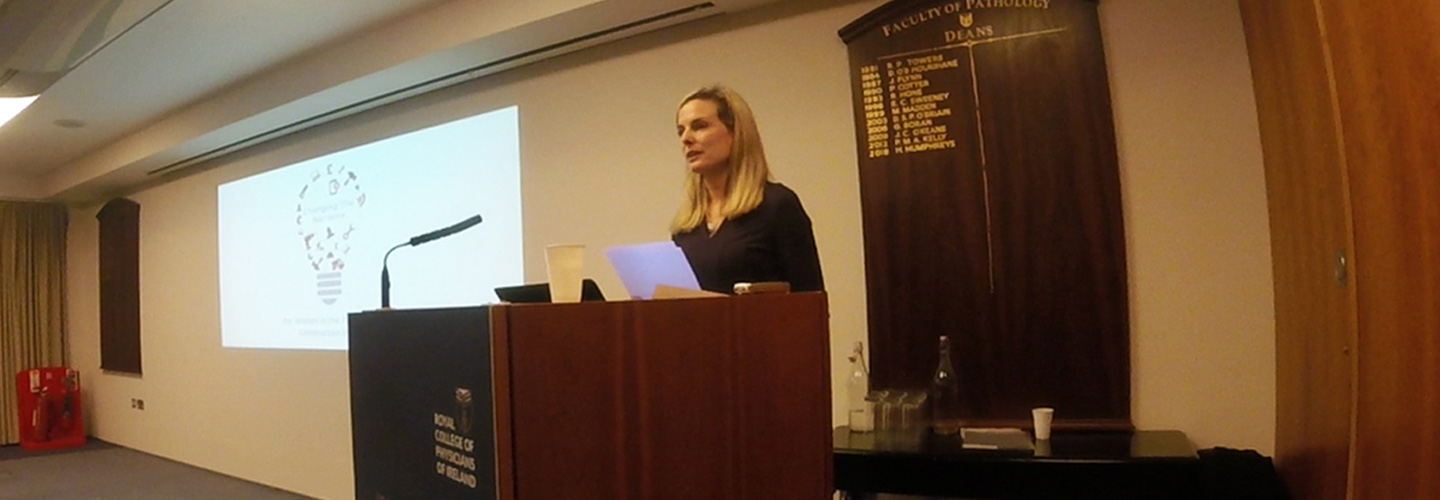International Women’s Day is a global phenomenon that honours women and supports women’s rights. However, this day is also a reminder of gender inequality that women continue to face in every level of society. GoContractor has time and again supported its view on the uplifting of women in construction and other heavy industries, which is majorly plagued by gender bias.
GoContractor COO Julie Currid, as a part of her continuous efforts to boost female equality, recently became a part of “Changing the narrative for women in construction and property industry” event that was organised to highlight gender inequality in the construction industry and discuss how balanced leadership within the industry is a benefit for everyone involved.
“Changing the Narrative” aimed to highlight that women are as capable for every role in all the industries as men are.
Key speakers of the event were – Julie Currid, COO of GoContractor, Áine Myler, Director General at SCSI (Society of Chartered Surveyors Ireland), MD of Optimise Design, Denise O’Connor and Life Coach Marina Leleko. Julie Currid started the event through her powerful speech on gender inequality in the construction industry, which once resolved could significantly deal with the labour shortage in this industry.

Each of the female speakers explained why a better male and female balance was so important to them, how they’d personally been involved and how this could be achieved by other companies. They discussed their own role and passion in empowering women to enter a predominantly male industry.
Julie shared her views on unintended gender bias. Sharing her view on gender inequality, she stated:

One example of the unintended gender bias that Julie gave was the familiar pink and blue sections used by clothing chains to clarify whether it was set for young boys or girls. This is just one of the many things that fuel gender bias disturbing brains and personal opinions from such a young age.

Studies have shown that boys between the age of 5 to 15 months are given cars, tools and sports equipment, while girls are more likely to receive dolls and pink clothing. Seeing a baby dressed in pink, there is an almost universal assumption that this is a girl.

While focusing on power for women, speakers also discussed the unique benefits that men and women can both bring to any workplace. Statistics reveal that if more women were offered important roles, working as overall decision makers, influencers and power holders, there could be a 15% increase in profitability.
This gender imbalance was further discussed by Áine Myler, Denise O’Connor and Marina Leleko. They too had worked in male-dominated sectors. They discussed the importance of creating an environment to make women feel comfortable. Marina Leleko emphasized on the importance of empowering women and each other being our own role model and setting examples. An interesting point highlighted at the event was that most men would like more women in construction and one of the reasons for this was the female ability and desire to listen to problems.
Of the 86 people on the boards of the top ten contractors in Ireland, there were only 6 women, accounting for just 6.5% of the total.

Asked at the end how the young workforce can be encouraged to enter the industry from an early age, it was described as a rebranding exercise to give people a new view of the industry and the long-term benefits involved.
This means that the original model people see of working in this industry needs to be altered, allowing men and women to recognise it more as an end-to-end career path that they can plan their growing role in and most importantly is not seen as a male-dominated industry.
We need to find out ways that could make the industry more appealing including, giving women the opportunity to grow at their job, equal pay all the way and fair representation at the top, as Julie stated:
